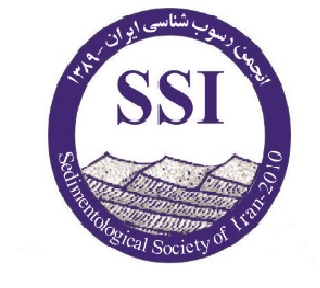Comparison of hydrothermal alteration features (zones) of Torud-Chah Shirin magmatic Arc in north and south of the Torud village using Aster image and chemical analyses
Subject Areas :Masoud Akhyani 1 , Mahdi Kharghani 2 , Farhang Sereshgi 3 , Morteza rahimi 4
1 -
2 -
3 -
4 -
Abstract :
Torud - Chah Shirin volcanic-plutonic complex, related to Eocene series, is located about 130 kilometers south of Shahrood, in the south and north of Torud village. This zone is located in 54˚20' to 55˚20' east longitude and 35˚10' to 35˚40' north latitude. The presence of several mineral occurrences, especially base metal veins of epithermal origin and the intrusion of igneous acidic to intermediate bodies in volcanic rocks of the area caused different alternation and mineralization in some parts of the area and increased the economic importance of the magmatic complex for geological studies. False color composites (FCC), band ratios (BR) and spectral angle mapping (SAM) which were performed on ASTER dataset for discrimination of alteration of argillic, advanced argillic, phyllic and prophyllitic zones and evaluation of results by XRD analysis, are the fundamental information for this research. The field studies and XRD analyses of different zones resulted in adaptation with logical operator algorithms and revealed unremarkable volcanic alteration zone in the south of Torud, in comparison with volcanic zone in the north of Torud. In addition, altering in threshold of algorithm band ratio can be used to find better results in discrimination of argillic and phyllic alterations. Then based on the presence of indicator minerals of advanced argillic alteration in the north of Torud, like alonite and prophillite, the optimal threshold for discrimination of this zone from argillic zone by logical band ratio algorithm was determined. The results were evaluated as acceptable, compared to field study. On the other hand, spectral character of remarkable minerals of this zone, like chlorite and epidotite, in band ratio of Aster 8(9+7) with threshold of 2.3, is reported appropriate for land surveying of proplitic zone in the north and south of Torud village.

